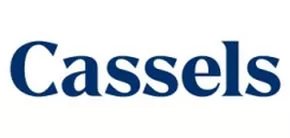- within Finance and Banking topic(s)
- with Finance and Tax Executives
- in United States
- with readers working within the Banking & Credit, Metals & Mining and Securities & Investment industries
October 23, 2025 marked the next step in Canada's shift toward semi‑annual reporting. Building on the themes we explored in our September Cassels Comment, the Canadian Securities Administrators (CSA) have published a proposed, multi‑year pilot project (the SAR Pilot) that would permit certain venture issuers to voluntarily adopt semi‑annual financial reporting through Coordinated Blanket Order 51‑933 – Exemptions to Permit Semi-Annual Reporting for Certain Venture Issuers (Blanket Order).1 This development follows the CSA's earlier indication2 that it was considering alternatives to quarterly financial reporting and represents a potential significant change to Canada's disclosure framework.
If adopted, the SAR Pilot would allow eligible venture issuers to skip first- and third-quarter interim financial reports and related MD&A, and instead file on a semi‑annual cadence. The CSA's objective is to reduce administrative burden and costs for smaller issuers while maintaining investor protections through continuous disclosure of material changes and targeted conditions.
For issuers that spend disproportionate time and resources preparing first- and third-quarter financial statements that some commentators have suggested add little incremental insight, this is a meaningful development, and one that aligns Canada with certain international practices, while remaining optional for those issuers who prefer the status quo.
Key Eligibility Criteria
To rely on the proposed Blanket Order, an issuer must meet all of the following at each of the issuer's three‑ and nine‑month interim period ends:
- Venture issuer with securities listed on the TSX Venture Exchange (TSXV) or the Canadian Securities Exchange (CSE).
- Revenue ≤ C$10 million on the most recently filed audited annual financial statements.
- A reporting issuer for at least 12 months in one or more Canadian jurisdictions.
- Timely and complete filings of all required periodic and timely disclosure documents.
- No specified sanctions in the prior 12 months (e.g., court‑ordered or regulatory penalties related to securities law, other than administrative late‑filing penalties) and no cease‑trade order that has been outstanding for more than 30 days.
- A news release must be filed on SEDAR+ announcing the adoption of semi‑annual reporting and identifying the first interim period for which filings will not be made, including the following statement:
"This news release is being filed pursuant to CSA Coordinated Blanket Order 51‑933 Exemptions to Permit Semi‑Annual Reporting for Certain Venture Issuers."
Scope of the Exemptions
Issuers that opt in would no longer be required to file first- and third-quarter interim financial reports or related MD&A under National Instrument 51‑102 – Continuous Disclosure Obligations. For the six-month interim filing, such issuers would not need to include a separate three-month statement of comprehensive income or comparative quarterly information from the prior year. Certain MD&A requirements would also be modified, including the removal of the eight-quarter summary and the current-quarter analysis in the interim MD&A. However, the relief does not extend to prospectus-level disclosure. Issuers will not be able to rely on the SAR Pilot during a short form prospectus distribution and will be required to cease relying on the exemptions if they change their year-end or file a base shelf prospectus. While participating in the SAR Pilot, issuers will be prohibited from filing a shelf prospectus supplement.
Timing and Next Steps
The CSA is accepting comments on the proposed Blanket Order until December 22, 2025, and expects the SAR Pilot to be in force prior to the end of March 2026. Issuers that intend to participate should begin planning now, as eligibility is assessed at each interim period and opting in requires advance disclosure through a news release.
Takeaways
For venture issuers, the SAR Pilot offers an opportunity to reduce administrative burdens and redirect resources toward operations and growth. However, semi-annual reporting does not change the obligation to promptly disclose material changes and issuers should consider how reduced financial reporting frequency may affect investor expectations. Those contemplating participation should review their financing plans carefully, as reliance on the SAR Pilot may impact the options available for future capital raising initiatives. A proactive approach by coordinating legal, finance, and investor relations teams will help issuers navigate eligibility requirements and maintain transparency.
Footnotes
1. Canadian Securities Administrators, "Canadian securities regulators propose semi-annual financial reporting pilot," (Oct. 23, 2025).
2. Jameson Berkow, "TSX head expects semi-annual reporting for some firms within two years," The Globe and Mail (Sept. 20, 2025).
The content of this article is intended to provide a general guide to the subject matter. Specialist advice should be sought about your specific circumstances.





